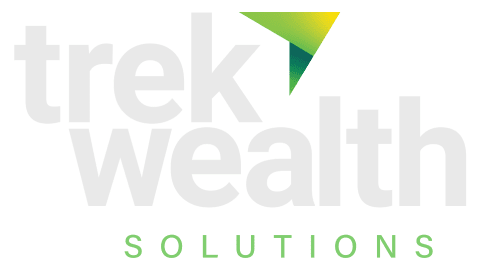Corporate Retirement Plans Encourage Financial Wellness for Employees
A person’s health and wellness are impacted by various life factors. One of those factors is a person’s financial condition. With a corporate employer-provided retirement plan, you can provide your employees with the opportunity to enhance their personal financial wellness. The plan gives them an efficient savings tool and a potential company match to help them achieve their financial goals. Additionally, the employees’ access to financial and investment guidance and resources to which they may not currently have access.
The Trek Wealth team can partner with you to provide an employer retirement plan for your employees. Trek Wealth team members are available to work directly with your employees in managing their retirement plans and provide financial planning and guidance beyond retirement savings. We encourage clients to live for today while planning for tomorrow.
Types of Retirement Plans for Your Employees
When considering an employer retirement plan, you need to be knowledgeable about the different plan types. Employer-provided retirement plans include defined benefits, defined contributions, and traditional and non-traditional retirement plans. Each plan is designed and chosen according to your company’s size, number of employees, financial resources, and goals for the employer-provided plan Your Trek Wealth team will work with you to evaluate these factors and select a plan that is most appropriate for your unique company.
Attract and Retain Talent with Corporate Retirement Plans
If you are struggling to attract and retain talented employees, you might want to consider adding an employer-provided retirement plan to your employee benefits package. Retirement plans are employer-sponsored savings plans that are designed to help employees save for their retirement years. These plans are an important part of many employees’ retirement income and are a valuable benefit that employers can offer to attract and retain talented workers.
There are several types of employer-provided retirement plans, including:
- Defined benefit plans: These plans provide a guaranteed retirement benefit to employees based on a formula that considers their years of service and earnings. The employer is responsible for funding the plan and assumes the investment risk.
- Defined contribution plans: These plans allow eligible employees to save a portion of their salary in a tax-advantaged retirement account, such as a 401(k) or 403(b). The employer may offer a matching contribution up to a certain percentage of the employee’s salary.
- Cash balance plans: These plans are a type of defined benefit plan that provides employees with a guaranteed account balance at retirement, like a defined contribution plan.
- Employee stock ownership plans (ESOPs): These plans allow employees to own a portion of the company’s stock as part of their retirement savings. ESOPs can be a tax-efficient way for business owners to transition ownership of their company to employees.
- Employers must adhere to certain regulations and reporting requirements when offering corporate retirement plans, such as the Employee Retirement Income Security Act (ERISA) and the Internal Revenue Code. These regulations are in place to ensure that retirement plan assets are protected and that employees are provided with adequate information about their plan options and benefits. Again, your Trek Wealth team will work closely with you in developing an employer-provided retirement plan that enhances your employee recruiting and retention efforts.
Advisory services offered through Sowell Management, a registered investment advisor with the Securities and Exchange Commission; being registered with the SEC does not imply a certain level of skill or training. Past performance is no guarantee of future results. All returns are presented on a time‐weighted basis and presented net of fees. Returns are annualized for periods greater than one year. Asset class, stock sector, bond sector, and geographic breakdowns are based on Bridge’s security classifications, who in turn relies on asset classifications from ICE and Fiserv and may not be identical to classifications from other sources. The change in investment value of your holdings reflects the appreciation or depreciation of your holdings due to price changes, plus any distributions and income earned during the report period, less any transaction costs, sales charges, or fees. Gain/loss and holding period information may not reflect adjustments required for your tax reporting purposes. You should verify such information when calculating reportable gain or loss. Sowell Management specifically disclaims any liability arising out of a customer’s use of, or any tax position taken, in reliance upon such information.y


